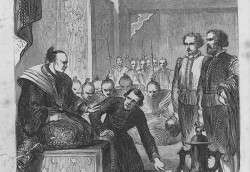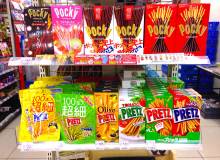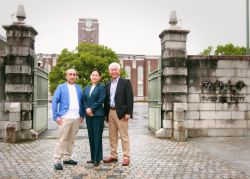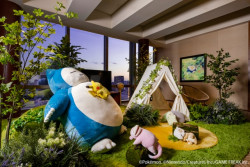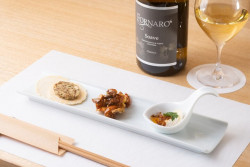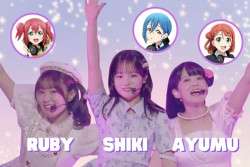
July 19, 2013
We Heart Kanagawa
The prefecture is more than just Yokohama and surf breaks
By Metropolis
Originally published on metropolis.co.jp on July 2013

When Commodore Matthew Perry sailed into Tokyo Bay in 1854, all of Japan would change forever. Perry conducted most of his official business in Kanagawa, placing the prefecture at the heart of Japan’s new age of creativity and openness to this day. Starting in its easternmost city, Kawasaki, and heading west, here are some highlights.

Kawasaki Horse Track (Keiba) is a wild ride if you’re betting on the fillies. But for non-gamblers and those spending winnings or drowning sorrows alike, the course is extremely proud of the food on offer. The track’s leading jockeys can be seen on the website introducing their favorite on-track snacks, including soba, gyoza, ramen, yakisoba, and curry. The Kawasaki track may be Japan’s smallest, but that only brings the crowd closer to the action. So close, in fact, that you feel like you could reach out and touch the horses as they gallop past. Easy to reach, a day at the races is a sure bet. Entry ¥100 or free if you print out the ticket from their website. Getting there: Minatomachi station on the Keikyu Daishi line is just across the street. Or use the free shuttle bus service from pole #21 at JR Kawasaki station.
1-5-1 Fujimi Kawasaki-ku, Kawasaki. JapanTourist entry here.

While much of Yokohama’s Chinatown activities revolve around eating, eating and more eating—and maybe a little shopping—there is actually a febrile world of activity bubbling away beneath your first impression. To attain spiritual wellbeing before starting in on the dumplings and noodles, show up early Saturday mornings for Tai chi at Ma Zhu Miao Temple (“Masobyo”). An instructor will guide you through the motions of the ancient Chinese martial art widely practiced for its meditative and health benefits. The free one-hour class starts at 9am with sign-ups at 8:30am.
Getting there: Motomachi Chukagai station on the Minato Mirai (Tokyu Toyoko) line.

Just past the ancient city of Kamakura lies the beautiful seaside town and island of Enoshima. Appreciate the landscape and listen to the rolling waves from the Enospa hot spring. The upscale complex allows men and women to bathe together (with swimming costumes) in pools indoors, outdoors, and in grotto-like caves. There are also saunas, whirlpool and massage facilities to enjoy, as well as a Southeast Asia-themed spa. Book your table at the Italian restaurant in time for a spectacular sunset over the bay and Mt. Fuji.
All day pass: ¥2,650 (adults)/¥1,200 (elem—no children under six admitted; no children Sundays). Getting there: A short walk from Enoshima station (Enoden line, Shonan Monorail, Odakyu line). 2-1-6 Enoshima, Fujisawa. JapanTourist entry here.
The Iwaya Caves on Enoshima Island have been eroded by the tides over thousands of years, and elevated up from the sea by repeated earthquakes. The spot is still impressive, though it has lost some of its ancient wonder through redevelopment as a tourist sight by Fujisawa City. Hiroshige, Hokusai, Toyokuni, and other famous ukiyo-e artists rendered Iwaya and Enoshima in many of their woodblock prints.
Getting there: A short walk from Enoshima station (take either the Enoden line, Shonan Monorail or Odakyu line to Enoshima station). Adult: ¥500/Child: ¥200. JapanTourist entry here.

The Shonan Tatsunokuchi Antique Fair is held every third Sunday from early in the morning until sundown at Ryukoji Temple. Depending on the season (and weather) you could find as many as 80 dealers plying their wares. As at any antique fair there’s a lot of junk surrounding the good finds, but that’s the fun of it. There’s no charge to stroll around and view the sellers’ tables spread out around the temple grounds. Goods spotted here include an immensely beautiful but prohibitively expensive temple door, noh masks, old army medals, dolls, craftsman’s tools, and much more. Just a short walk from Enoshima, this is a great way to start off (or finish up) a day on the island.
Ryukokuji Temple: 3-13-37 Katase-ku, Fujisawa. Free entry.
For picturesque sunsets over Fuji-san you can’t beat the west coast of the Miura Peninsula. Aburatsubo’s Araihama Beach is a prime example. A walking course circles from in front of the Hotel Keikyu Kanchoso through Araihama and back down to the beach behind Aburatsubo Marine Park. Swim or fish for free to your heart’s delight, then stretch out on a lounger and sip an ice cold beer outside Hawaiian-themed beach house Kamehameha (1027-2 Koajiro Misaki, Miura; drinks and food from ¥600-1,500). You’ll be well placed to view “Diamond Fuji”—when the sun sets precisely over the mountain’s peak twice a year (next one: Sep 21).
Getting there: Take the Keikyu line from Yokohama (or Shimbashi, or Shinagawa) to Keikyu Misakiguchi station. Take a Keikyu bus from there to Aburatsubo bus stop. JapanTourist entry here.

The city of Odawara is rich in history and natural beauty, and features as its landmark the beautiful three-tiered, five-story Odawara Castle. Visitors can find a cosplay alternative to Harajuku just outside its entrance. Rent traditional costumes from kimono to samurai armor, and spend the day inspecting the castle as the historical Japanese characters once did—with the added possibility of posting photos on your Facebook page.
Getting there: A ten-minute walk from JR Odawara. 6-1 Jonai, Odawara-shi, Kanagawa-ken. ¥400. JapanTourist entry here.
Along the route from Odawara is famous day-trip destination Hakone, crammed with hot spring baths alongside the wonderful Hakone Open Air Museum. Located in the forests near Gora, this place grabs your attention fast. More than 120 pieces of sculpture by some of the best artists in the world—including plenty by Henry Moore—are scattered around a large park. You can also view Picasso ceramics and other special exhibitions in indoor gallery spaces. Most of the art is out there under the heavens, harmonizing with the blue sky and green landscape. Tired feet will appreciate a hot-spring footbath in the grounds, seasoned with whole oranges and yuzu.
Getting there: From either JR Odawara or Odakyu Hakone Yumoto, take the Hakone Tozan Line to Chokoku-no-Mori (2min walk). Entry ¥1,600 (adult)/¥1,100 (HS & univ)/¥800 (JHS & elem). Ninotaira, Hakone. www.hakone-oam.or.jp/english. JapanTourist entry here.
Kanagawa is also home to several United States military bases that offer a unique experience for those lucky enough to get in. Whether it’s getting up close and personal with the massive warships on the Yokosuka Naval base or the sleek aircraft at Naval Air Facility Atsugi, visitors will get an eyeful of some impressive equipment. Though the bases are not open to the public, there are several “friendship” festivals that take place throughout the year when they open their doors to the public. They also coordinate activities that take place in the local community.
For info related to the bases, please visit the Atsugi and Yokosuka community pages.

